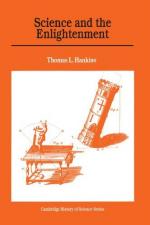
|
| Name: _________________________ | Period: ___________________ |
This quiz consists of 5 multiple choice and 5 short answer questions through Chapter 6, The Moral Sciences.
Multiple Choice Questions
1. What was the name of the revolution that was a cultural event associated with Galileo Galilei, Johannes Kepler, Rene Descartes, and Isaac Newton?
(a) Enlightenment Revolution.
(b) French Revolution.
(c) Scientific Revolution.
(d) American Revolution.
2. Of all the prize papers, Rousseau's ________, written for the prize offered by the Dijon Academy in 1750, has had the most lasting fame, according to the narrator in Chapter 6.
(a) Vegetable Staticks.
(b) Dissertation on Ice.
(c) Discourse on the Sciences and the Arts.
(d) Examination of a Theory of Electricity and Magnetism.
3. The eighteenth century was called by the French the ________ because of its emphasis on reason as a path to knowledge.
(a) Century of science.
(b) Century of life.
(c) Century of reason.
(d) Century of light.
4. Chapter 1 states that in 1700, ________ first talked about an "almost complete revolution in geometry" that had begun with the analytic geometry of Descartes.
(a) Leibniz.
(b) Cartesians.
(c) D'Alembert.
(d) Bernard le Bovier de Fontenelle.
5. Leibniz, in his differential calculus, broke up the curve into many little straight lines, creating a ________, in Chapter 2 of "Science and the Enlightenment."
(a) Centripetal curve.
(b) Polygon curve.
(c) Diagonal curve.
(d) Pentagon curve.
Short Answer Questions
1. What category of science, at the beginning of the Enlightenment, was "the science that teaches us the reasons and causes of all the effects that Nature produces," including both living and nonliving phenomena?
2. When experimentalists studied electricity, the ________ and the ________ were candidates for study because they both appeared to protect themselves electrically.
3. Some of the "cabinet de physique" became very large, the most famous being the collection of the ________ in Haarlem.
4. ________, "curator of experiments" at the Royal Society, began research on the luminosity of phosphorus in 1705, under instruction from members of the society.
5. What area of study in the Middle Ages had been the domain of those truths that could be found through the use of reason alone without the revelation of the Bible?
|
This section contains 338 words (approx. 2 pages at 300 words per page) |

|




